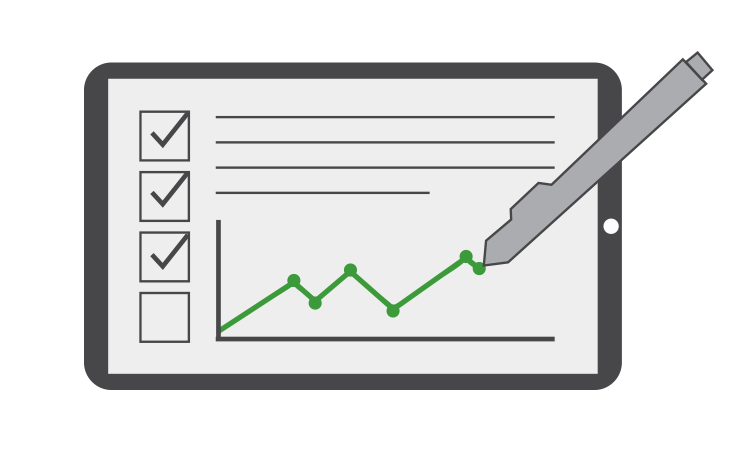
Many small business owners and entrepreneurs know they should be tracking key performance indicators (KPIs) for their businesses, but let’s be honest: it’s much easier said than done. Your plate, more often than not, is very full.
Nevertheless, KPIs are integral to the future of your business and should not be neglected. Paul Yarwood points out in an article in Accounting Today: “They provide insight into the here and now, and how it is directing what is to come – unlike a report on how a business did in the past.”
Real-time KPIs allow you to truly know how your business is doing so you can be proactive instead of reactive in your operations – and ultimately, successful.
There’s a plethora of different KPIs you can track, but a few important KPIs that SMBs should track irrespective of industry.
So, if you’re a small business owner, what are some of these KPIs – and why are they important for your business?
Gross Profit Margin = Gross Profit / Revenue
Your gross profit margin shows you exactly how much revenue your company has after you’ve deducted the costs of sales and how much is left to cover operating expenses.
Why is it important?
By calculating your gross profit margin, you can quantifiably measure how well you are selling your product(s) or service(s). You will be able to determine:
To calculate your total revenue, measure the total amount of money your company receives for your goods sold or services provided.
It is especially useful to compare to your target revenue.
Why is it important?
By continuously monitoring your revenue and comparing it to your goal, you will know, in real time, how your business is really doing.
It also might be an indicator that you should reevaluate your pricing or your entire pricing model.
You can see overall trends and capture your business’s progress over a period of time. If you see a negative trend, you can start taking measures to reverse this trend before it’s too late.
In short, you have time to react before any negative trends continue.
Operating Profit Margin = Operating Profit / Revenue
This KPI shows you the proportion of revenue you have left after deducting your operating expenses.
Not only does it measure your business’s efficiency in terms of operations, but you can also use it to compare your business to the industry profit margin and your own business’s trends.
Why is it important?
Tracking this KPI is imperative for business growth and sustainability. You will know how your business stacks up against your industry. Are you meeting the status quo? If so, that might mean you’re doing well – or it might mean that you have room for improvement.
If your operating profit margin is lower than your industry profit margin, you will be alerted to this problem early and can start to determine why this might be occurring.
Then you can explore why your business is underperforming and what you’re doing wrong so you can remedy the situation before it escalates further.
Accounts Receivable Days = Accounts Receivable * Period Length / Revenue
This KPI tracks the amount of time it takes you to collect the money your customers owe you.
Why is it important?
Tracking your accounts receivable days is a great KPI to measure your cash flow. The faster your business collects your accounts receivables and the lower the number it is (i.e., the shorter the time frame), the better your cash flow.
If, however, you have a high accounts receivable days measurement, this might mean that you will not be able to pay your bills in time to your creditors.
Revenue Growth = (Revenue – Prior Revenue) / Prior Revenue
By measuring this KPI, you can see how your revenue has increased – or decreased – over a period of time. You can also compare it to the current economic growth rates.
Why is it important?
Your revenue growth percentage easily gives you a snapshot of your business trends. You can see if your growth is in alignment with your company goal – and how it compares to the month or even year before.
Comparing it to the current economic growth rates, meanwhile, can help you see if your business is growing as others are.
Debt to Net Worth Ratio = Total Debt / Total Net Worth or Stockholder’s Equity
You can use this KPI to compare how much debt you have compared to how much equity your business has.
Why is it important?
To put it simply, this KPI shows you how financially healthy – or unhealthy – your company is.
Ultimately, you don’t want your debt to outweigh your equity. If your company’s debt is higher than its net worth, your business suffers. Thus, the goal is to have a low debt to net worth ratio.
By measuring this KPI, then, you have a true pulse on the financial well-being of your business.
From a risk perspective, a ratio of 0.4 or less is considered better debt ratio.
